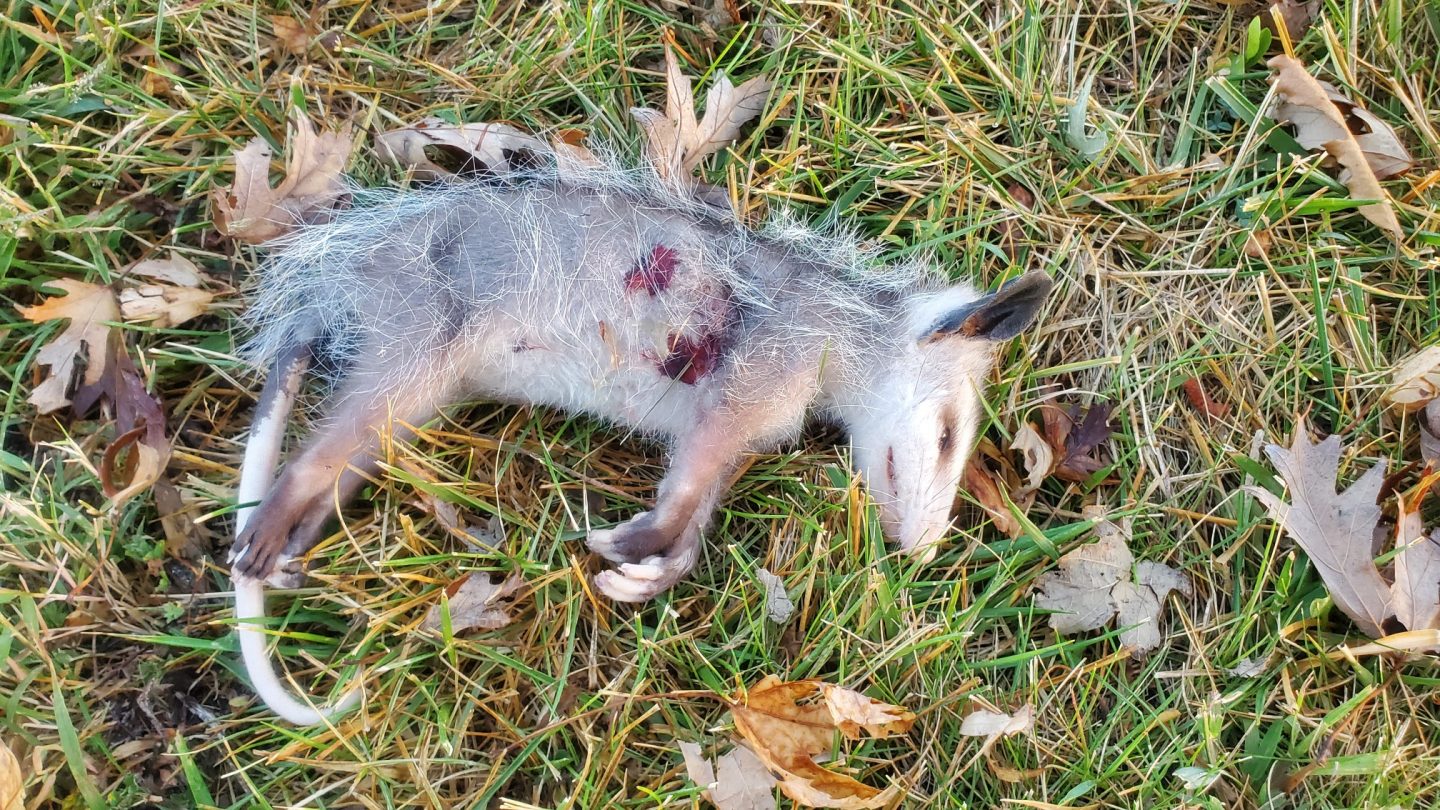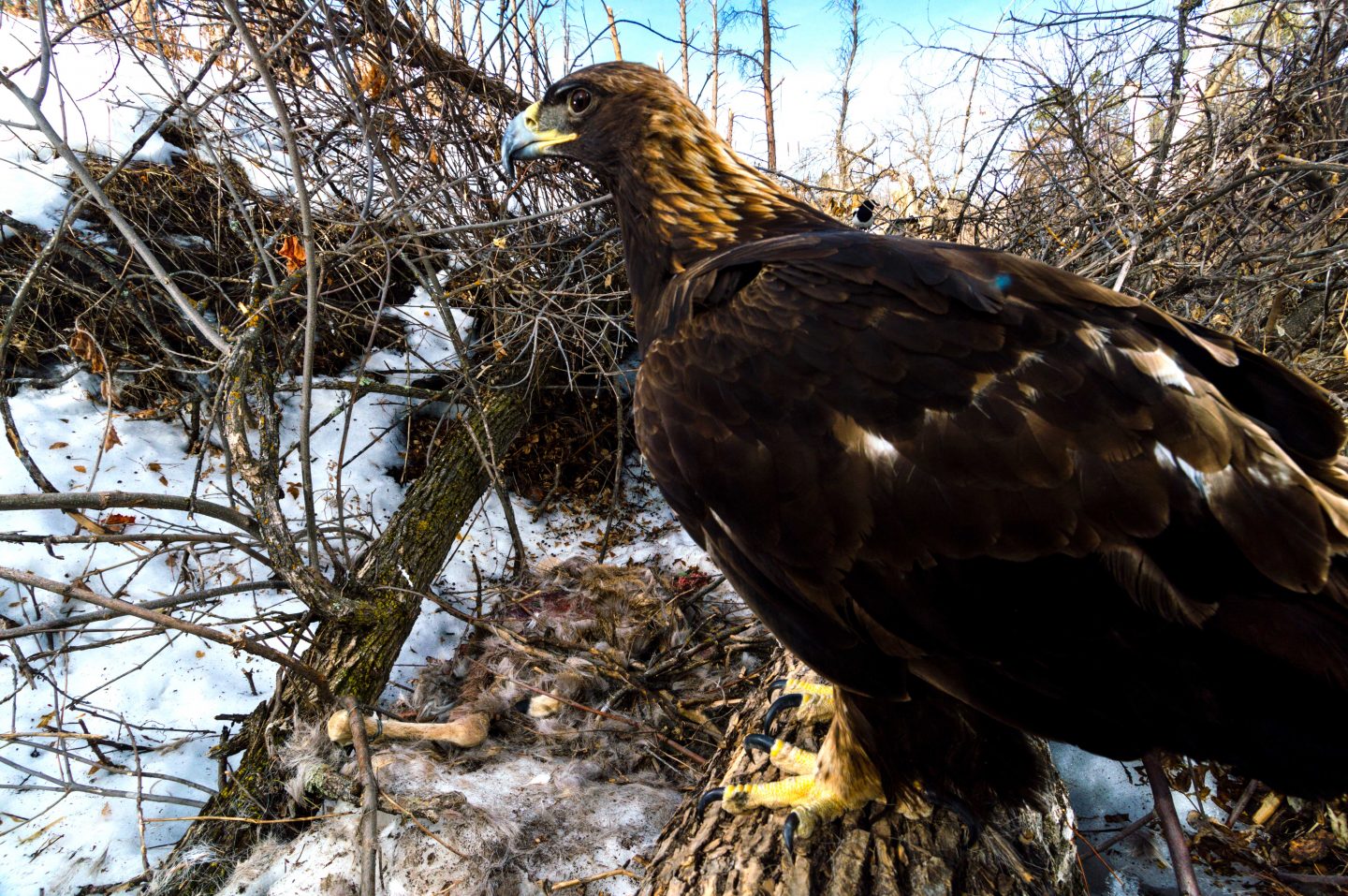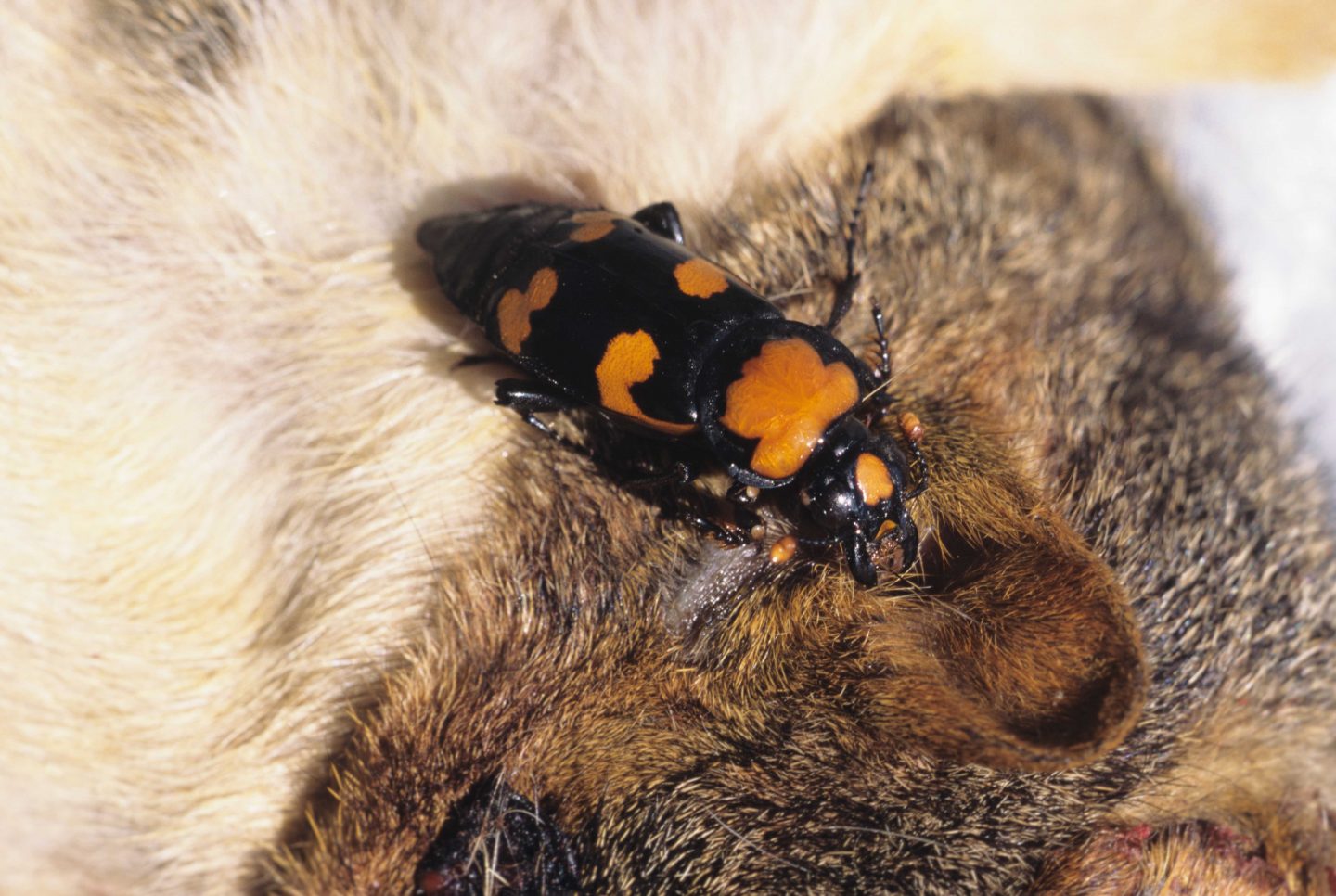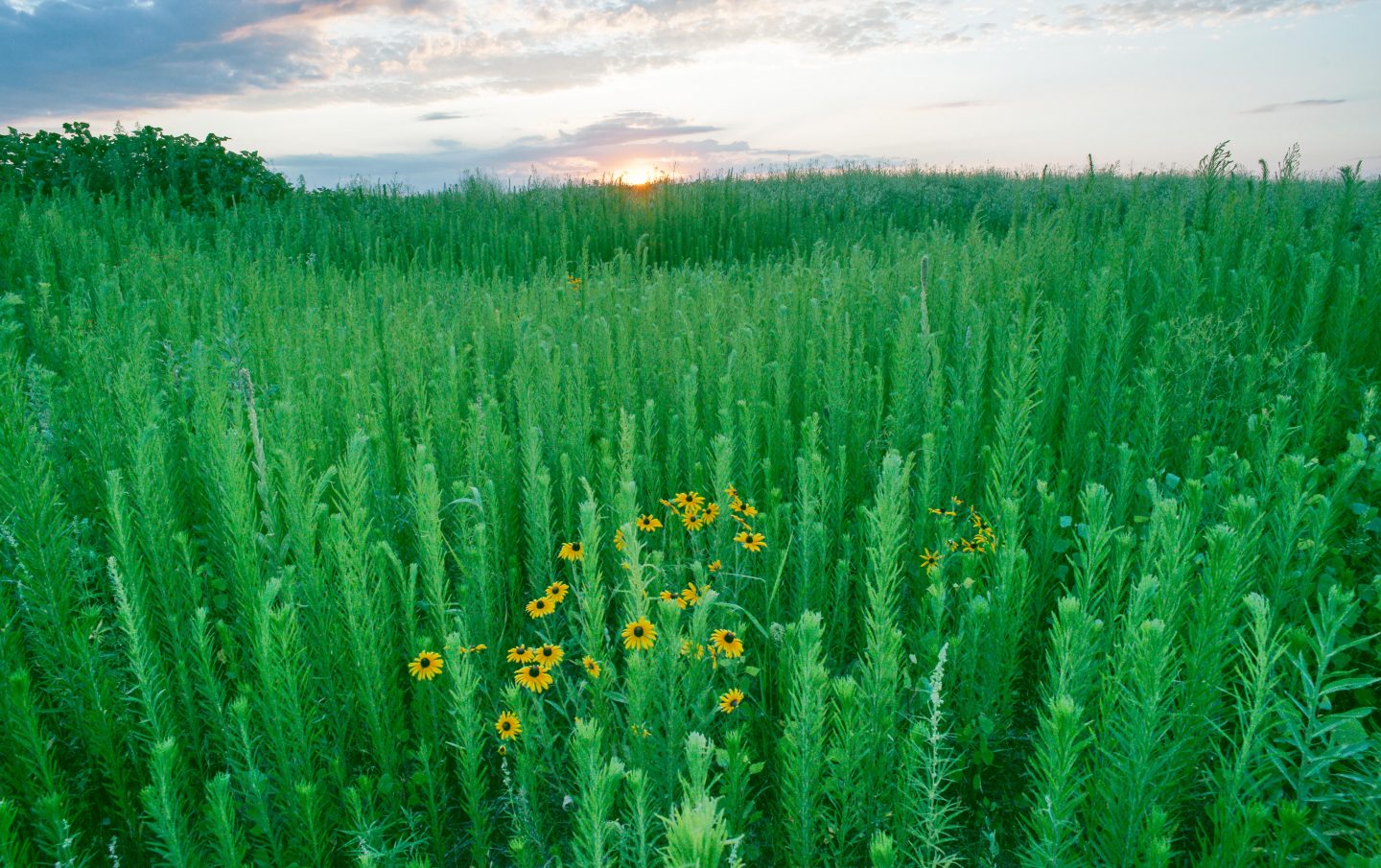
By Monica Macoubrie, Wildlife Education Specialist
When an animal dies in the wild, its carcass becomes the focal point of an intriguing micro-ecosystem that supports various life forms, each contributing to the breakdown and recycling of nutrients. This temporary ecosystem materializes almost immediately after death, drawing in a succession of organisms that thrive on the resources the carcass offers. In nature, only about 10 percent of the deceased animal is consumed, while the remaining 90 percent is uneaten, eventually decomposing into organic matter known as detritus. Decomposition is a vital process that releases nutrients to feed plants and support biodiversity.

Stage 1 – The Scavengers Arrive
The first visitors to a fresh carcass are typically large scavengers, such as vultures, coyotes and raccoons. These opportunistic feeders quickly spot the remains, using their keen senses to locate an easy meal.
As they tear into the flesh, they not only satisfy their hunger but also scatter bits of the carcass around, breaking it apart and making it more accessible to smaller creatures, ensuring that nothing goes to waste. This process accelerates decomposition by exposing the body to air and soil, which helps speed up the breakdown of organic material. Additionally, as scavengers digest their meals, they enrich the surrounding soil with nutrients through their droppings, returning valuable resources like nitrogen and phosphorus back into the ecosystem.
These scavengers play a vital role in controlling the spread of disease, as their highly acidic stomachs can destroy harmful bacteria present in decaying meat. By neutralizing pathogens, vultures and others reduce the risk of disease transmission among wildlife. This initial wave of scavengers lays the groundwork for the next phase of decomposition, inviting insects and microbes to move in and complete the process.

Stage 2 – Insects Move In
As the carcass begins to decompose, it becomes a magnet for an entirely new array of organisms, particularly insects. Flies, especially blowflies, are among the first to arrive, drawn in by the scent of decay. These flies lay their eggs in the soft tissues of the carcass, and within mere hours or days, the eggs hatch into larvae, or maggots. These maggots feast voraciously on the decaying flesh, significantly accelerating the decomposition process. As they consume the soft tissues, they tunnel through the carcass, which creates pathways for air and other organisms to enter the carcass. Their feeding habits help spread bacteria that play a critical role in decomposition, ensuring that the process unfolds efficiently and effectively.
Following the initial arrival of flies, a diverse array of beetles, ants and various fly species soon join the fray, each specializing in different stages of decay. Some beetles focus on consuming the skin or bones, while others target the fluids released as the body breaks down. This influx of insect activity transforms the decaying carcass into a bustling hub of life, characterized by movement and competition. Among the notable participants in this process are carrion beetles — there are 18 different species found in Nebraska alone. These scavengers have adapted to thrive on rotting meat. Equipped with specialized digestive bacteria and acids that neutralize harmful pathogens, they are able to feast without suffering adverse effects.

Stage 3 – The Microbial World Takes Over
While scavengers and insects play vital roles in the decomposition process, the real heavy lifting occurs on a microscopic level. Bacteria and fungi serve as the true engines of decomposition, tirelessly breaking down complex organic materials into simpler compounds, such as nitrogen, phosphorus and carbon — essential nutrients for the surrounding ecosystem. These microorganisms spring into action almost immediately upon an animal’s death, colonizing the carcass and starting their work of disassembly. As larger scavengers and insects feed on the remains, they inadvertently spread these microbes throughout the body, enhancing their ability to break down tissues. This symbiotic relationship between larger organisms and microbes ensures a more efficient decomposition process.
Moreover, as bacteria break down tissues, they produce gases such as methane and carbon dioxide, which cause the carcass to bloat. This bloating not only makes the remains more visible and accessible to other scavengers but also creates an environment rich in volatile compounds that attract even more insects and small animals.
Fungi, on the other hand, are particularly adept at breaking down tougher materials like cartilage and bone. These resilient organisms secrete enzymes that dissolve hard tissues, slowly releasing the nutrients stored within. The breakdown of these tougher materials is crucial for returning minerals and other essential elements to the soil, thus promoting plant growth. Together, bacteria and fungi create a dynamic and efficient decomposition process that enriches the environment, ensuring that nothing goes to waste and that life can continue to flourish in the wake of death.

Stage 4 – Nutrient Release and Plant Growth
As the carcass decomposes, the nutrients released seep into the surrounding soil, enriching it in ways that would not occur without the animal’s death. Vital elements like nitrogen, phosphorus and potassium leach into the ground, providing a nutrient boost that significantly benefits nearby plant life. This sudden influx of nutrients creates a fertile environment, allowing plants to flourish and thrive. In fact, the area may become more vibrant and lusher, attracting even more diverse plant species that can capitalize on the enriched soil. The nutrients released during decomposition can nourish the soil for weeks, months, or even years, contributing to ongoing plant growth and soil fertility.

This process of nutrient recycling is critical for maintaining plant diversity and overall ecosystem health. As plants take up these nutrients, they grow robustly, producing foliage and flowers that serve as food sources for herbivores. This creates a cascading effect throughout the food web; herbivores sustain predators, allowing the cycle of life to continue.
What might appear as a single death is, in fact, a catalyst for new growth, feeding and sustaining countless other creatures. In nature, nothing is wasted, and death is as much a part of the life cycle as birth itself.
